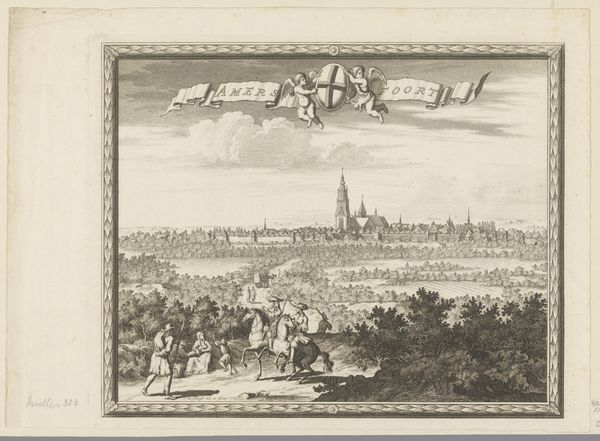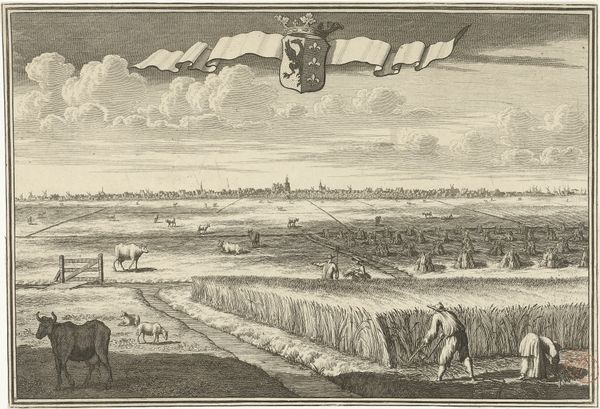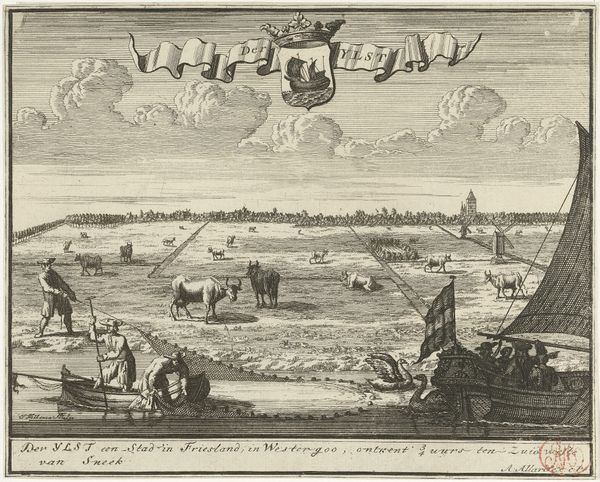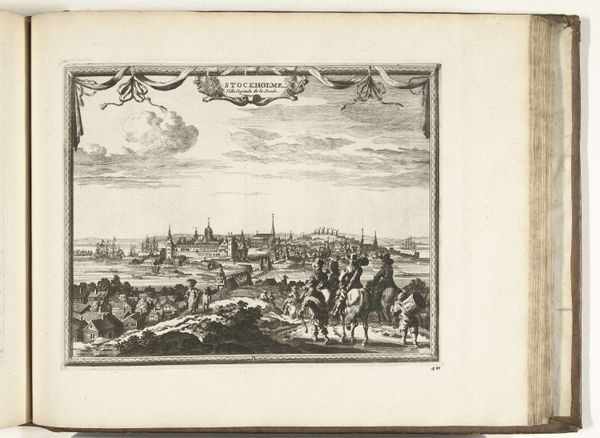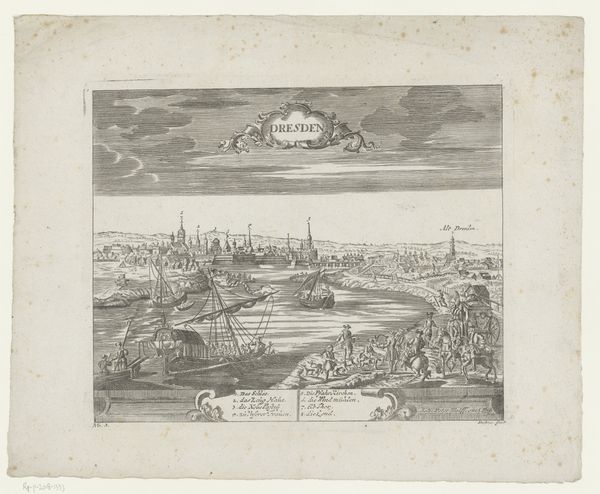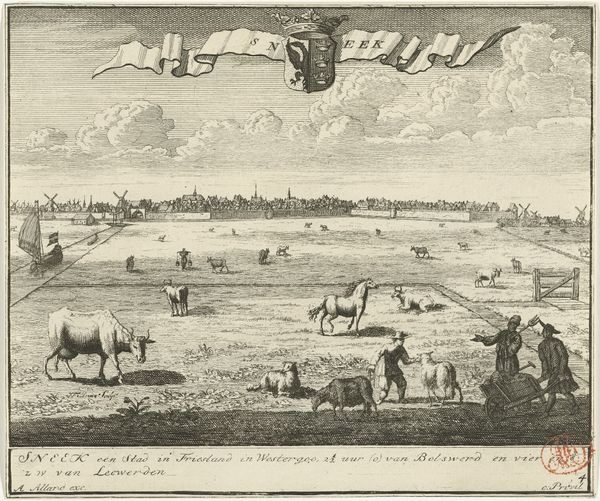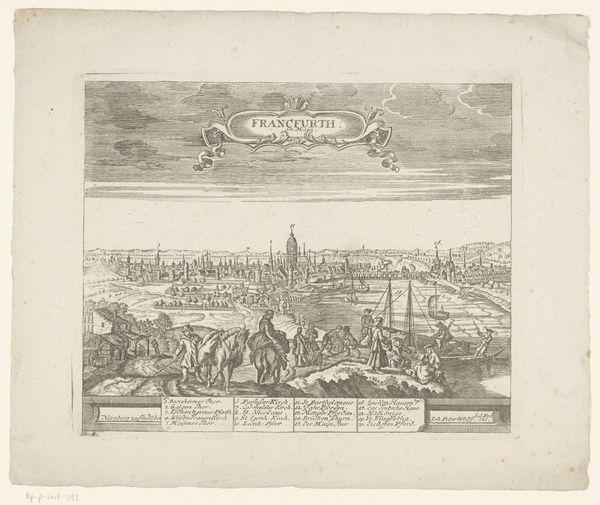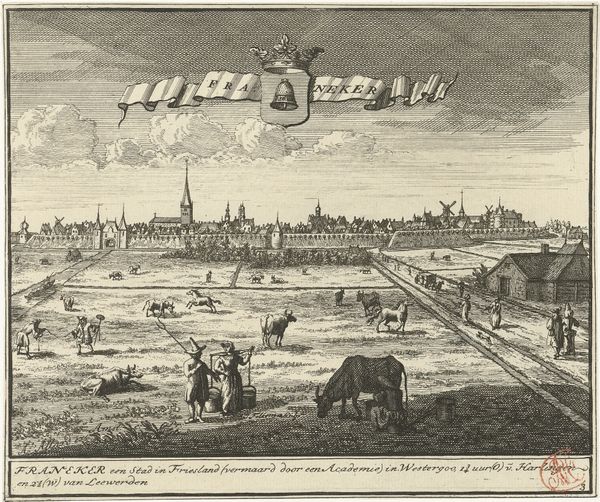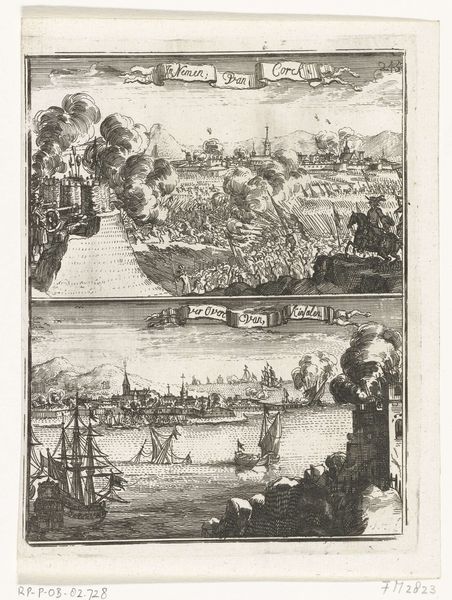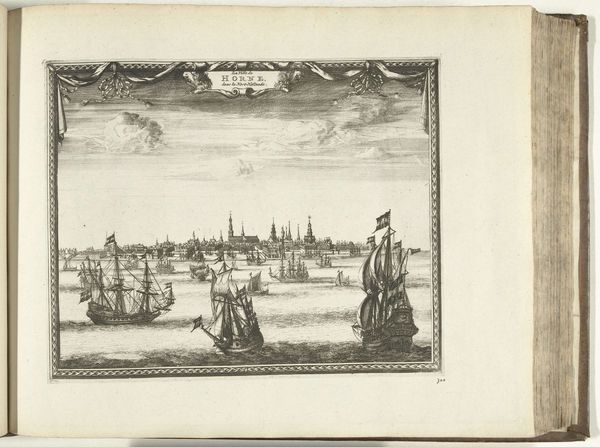
print, engraving
#
baroque
# print
#
old engraving style
#
landscape
#
folk-art
#
cityscape
#
engraving
Dimensions: height 179 mm, width 141 mm
Copyright: Rijks Museum: Open Domain
Curator: Here we have "Gezicht op Frankfurt am Main," or "View of Frankfurt am Main," an engraving dating back to around 1700, currently held at the Rijksmuseum. Editor: It's interesting; the scene almost has a dreamlike quality. There is a kind of ethereal transparency to the buildings on the skyline. Curator: Absolutely. Think about the role prints played at the time. Beyond mere representation, cityscapes such as these often conveyed civic pride, shaping the public perception of urban spaces and their power. This wasn't simply a rendering of Frankfurt, but a curated image projecting status. The positioning of text like an official document looming over the landscape reinforces that idea. Editor: I’m struck by the contrast between the bustling city depicted and the seemingly quiet exchange occurring in the foreground. There are the two figures – one mounted on horseback and the other walking. Who might they be? What social dynamics are implied there? Curator: It raises interesting questions, doesn’t it? I tend to think of engravings in the context of other mass-produced media—cheap books, news sheets—how the image might reflect and shape ideas about the individual, class, and commerce in 18th century Europe. Consider how the depiction of class relations and social mobility might impact those who see the image, the messages being spread to the townspeople. Editor: I’m intrigued by the level of detail afforded to this “folk-art” piece that's categorized by some to be of the “old engraving style.” The longer you look at this, the more of daily life seems to appear from within it. From our vantage point, the work almost has a living, breathing, ecosystem of humanity in front of us. The landscape seems to imply even now the deep current between citizen, government, and society at work. Curator: Precisely. This piece shows how the artist used material limitations, namely the tools of the engraver, to project a unique view of their present. That vision is then put on public display, further weaving those views into our historical perspective. Editor: Well, I think my biggest takeaway is in how it demonstrates our modern drive to dissect an older understanding, so that we might reshape a more holistic image of the past to carry with us today.
Comments
No comments
Be the first to comment and join the conversation on the ultimate creative platform.
